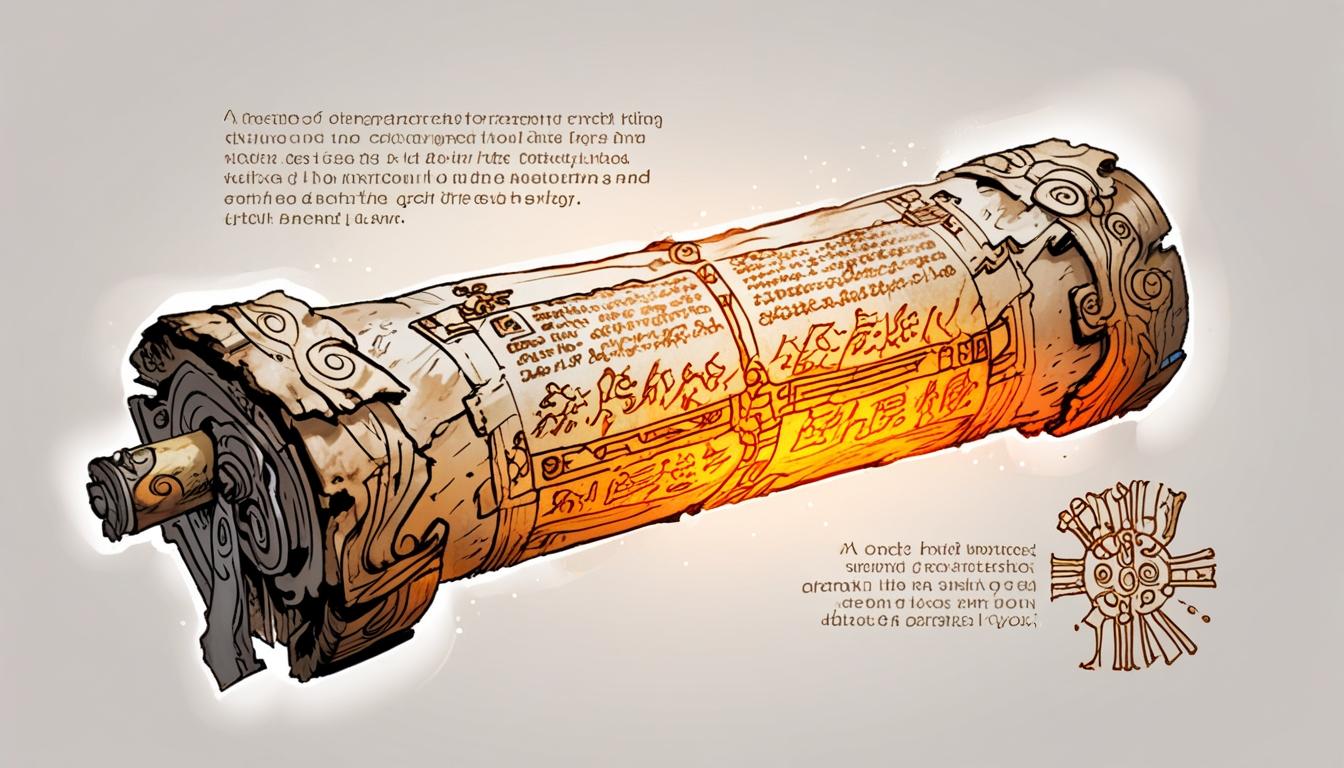In a remarkable scientific advancement, researchers have unveiled the title and author of a nearly 2,000-year-old text hidden within a charred scroll, all thanks to cutting-edge machine learning and imaging technologies. This achievement, documented in the journal PLOS One, marks a significant leap in our understanding of ancient literature and philosophy. The scroll in question, designated PHerc. 172, was buried beneath the ashes of Mount Vesuvius, which devastated the town of Herculaneum in 79 AD.
Herculaneum, along with its library, was engulfed by volcanic ash and pumice during the eruption, effectively preserving a cache of manuscripts that are invaluable for understanding the classical Roman period. Among them, the Villa of the Papyri remains a key site for archaeological study, yet many scrolls, like PHerc. 172, have resisted traditional recovery methods due to their fragile and charred conditions. This topic has long fascinated scholars, as the scrolls potentially contain works by figures pivotal to philosophical thought.
The integration of artificial intelligence has transformed the landscape of how these ancient texts are approached. A breakthrough in 2015 saw the use of X-ray tomography to create a three-dimensional virtual model of an ancient scroll from the En-Gedi site. The University of Kentucky's development of the Volume Cartographer programme subsequently advanced this technique, allowing the detection of ink traces on carbonized papyrus through micro-CT imaging. Researchers trained neural networks to analyse subtle patterns, successfully enabling them to decode previously illegible texts. By 2019, the technique was already showcasing viable results, paving the way for further exploration into these fragile relics.
The scroll's recent identification as a work by Philodemus, an Epicurean philosopher from the first century BCE, provides a significant cultural touchstone. His treatise, "On Vices and Their Opposite Virtues and In Whom They Are and About What," delves into ethical living by advocating for the cultivation of virtue while consciously avoiding vice. This message resonates strikingly with contemporary discussions around morality and self-improvement, broadening the relevance of ancient philosophical inquiries to modern audiences.
The effort to decode these scrolls is encapsulated in the Vesuvius Challenge, initiated in 2023. This initiative seeks to leverage crowdsourcing to recruit a diverse range of participants to aid in deciphering unopened scrolls. Alongside access to AI tools—specifically convolutional neural networks and transformer models—participants are tackling the challenge of reconstructing texts that may contain lost philosophical insights, including works attributed to Epicurus himself. A notable milestone was achieved in October 2023 when researchers identified the Greek word for "purple" from a previously unreadable scroll, igniting excitement in the academic community.
Moreover, students have also been drawn into this pioneering project, with numerous instances of young researchers successfully manipulating AI technologies to decode fragments of the Herculaneum scrolls. Their contributions not only demonstrate the potential for educational engagement in ancient studies but also highlight how collaborative efforts can yield tangible outcomes in historical research.
The fusion of advanced technology and ancient scholarship continues to reveal untold stories from the past, inviting further investigation into the knowledge that has shaped human thought. As the code underlying these treasured texts continues to be unlocked, we stand on the brink of rediscovering a library that has remained silent for millennia—a library that holds the collective wisdom of an entire philosophical tradition.
Reference Map
- Paragraph 1: 1, 2, 5
- Paragraph 2: 1, 4
- Paragraph 3: 1, 2, 6
- Paragraph 4: 1, 3, 6
- Paragraph 5: 1, 3
- Paragraph 6: 3, 4, 5
- Paragraph 7: 2, 4, 7
Source: Noah Wire Services
